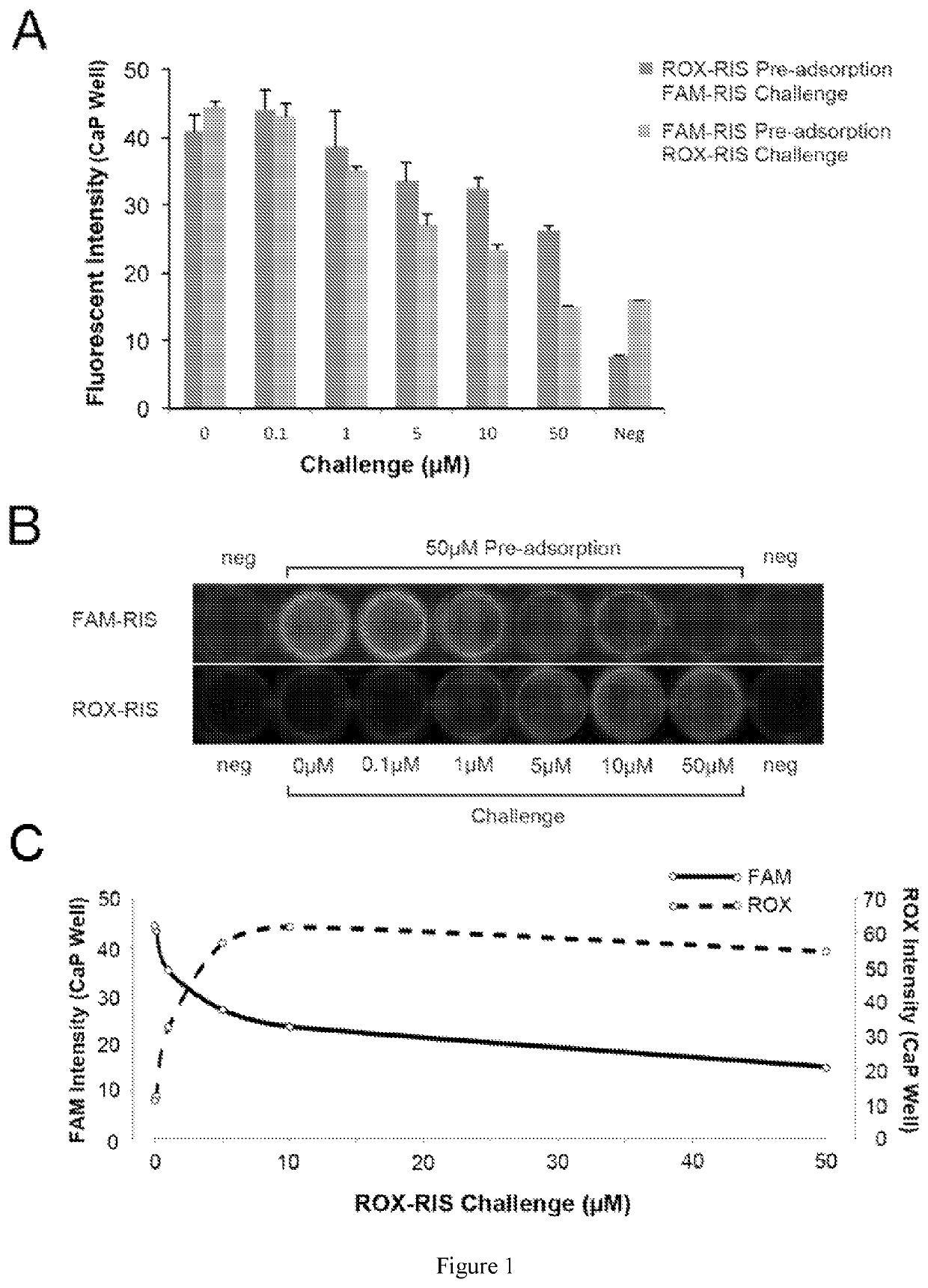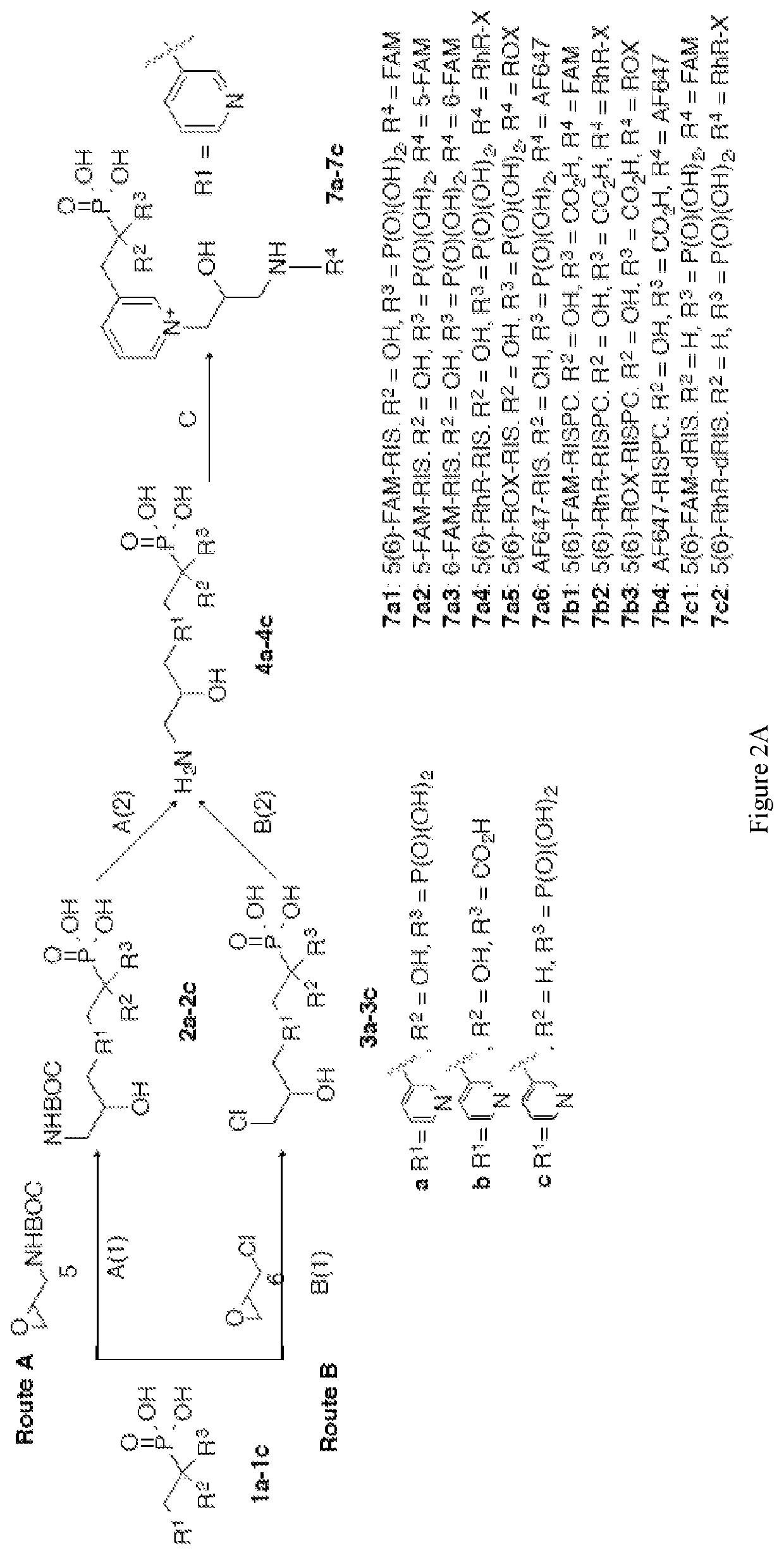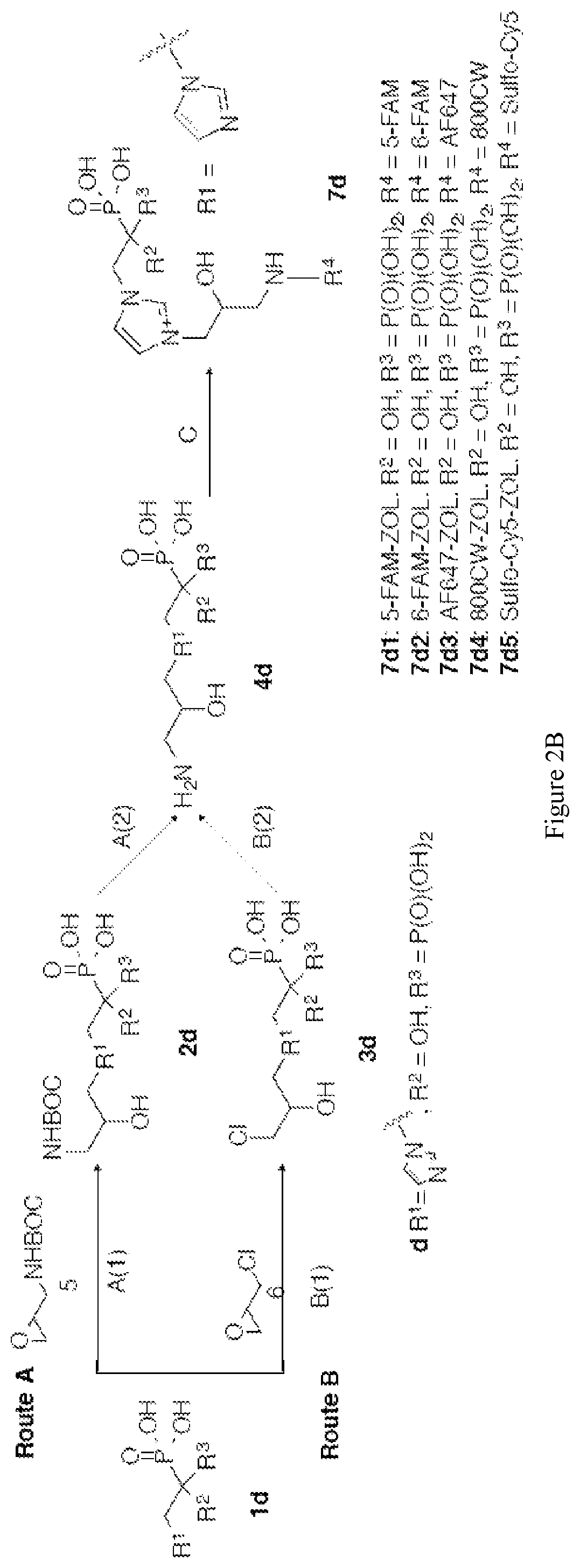Skeletal removal of bisphosphonates
a technology of bisphosphonates and skeletal bones, applied in the direction of group 5/15 element organic compounds, organic chemistry, drug compositions, etc., can solve the problems of increasing the risk of developing onj, affecting patients' life quality, and current preventive and treatment modalities are limited, so as to reduce the density of connectivity, other skeletal disorders, and reduce the risk of osteonecrosis.
- Summary
- Abstract
- Description
- Claims
- Application Information
AI Technical Summary
Benefits of technology
Problems solved by technology
Method used
Image
Examples
example 1
Synthesis and Characterization of FL-BPs with Variable Mineral Binding Affinities
[0071]Bisphosphonates having a fluorescent compound conjugated thereto (FL-BPs) that have low or undetectable biological activity but possess high bone mineral affinity were synthesized. Different fluorophores were conjugated to bisphosphonates using “Magic linker” technology (see, e.g., U.S. Pat. No. 8,431,714). In vitro characterization of binding affinity / pharmacological activity was performed.
experiment 1-1
L-BPs
[0072]FL-BPs were synthesized using “Magic linker” technology (see, e.g., U.S. Pat. No. 8,431,714) to conjugate BP compounds, e.g., RIS, ZOL, and other related analogues (e.g., FIG. 4) to fluorophores as schematically shown in FIG. 5A. The conjugates, FL-BPs, were obtained in 50-77% yield (>98% purity) and were characterized by UV-VIS, fluorescence emission, 1H NMR, 31P NMR, and HRMS. FIG. 6 shows the structural formulas of three FL-BPs that were synthesized. In some embodiments, BPs used according to the present invention are those as set forth in U.S. Pat. No. 8,431,714, which is herein incorporated by reference in its entirety. An example of an low activity BP is 1-hydroxy-2-(pyridin-4-yl)ethane-1,1-diyl bisphosphonic acid (p-RIS); another example of an inactive BP is 2-(pyridin-4-yl)ethane-1,1-diyl bisphosphonic acid (p-PyrEBP).
experiment 1-2
cterization of FL-BPs
A) Mineral Binding Affinity Assay
[0073]Hydroxyapatite assays indicate that the FL-BPs generally retain substantial affinity for bone mineral that reflect the affinity of the BP component and to a lesser extent, the affinity of the conjugated fluorophore. Hydroxyapatite (Macro-Prep® Ceramic hydroxyapatite Type II 20 μM) was obtained from Bio-Rad Laboratories, Inc. Hercules, Calif. Accurately weighed hydroxyapatite powder (1.4-1.6 mg) was suspended in a 4 mL clear vial containing the appropriate volume of assay buffer (0.05% (wt / vol) Tween20, 10 μM EDTA and 100 mM HEPES pH=7.4) for 3 hours. Hydroxyapatite was then incubated with increasing amounts of FAM-BP and ROX-BP (0, 25, 50, 100, 200, and 300 μM). Samples were gently shaken for 3 hours at 37° C. in appropriate volume of assay buffer (0.05% (wt / vol) Tween20, 10 μM EDTA and 100 mM HEPES pH=7.4). Subsequent to the equilibrium period, the vials were centrifuged at 10,000 rpm for 5 minutes to separate the solids a...
PUM
| Property | Measurement | Unit |
|---|---|---|
| pH | aaaaa | aaaaa |
| equilibrium dissociation constant | aaaaa | aaaaa |
| excitation wavelength | aaaaa | aaaaa |
Abstract
Description
Claims
Application Information
 Login to View More
Login to View More - R&D
- Intellectual Property
- Life Sciences
- Materials
- Tech Scout
- Unparalleled Data Quality
- Higher Quality Content
- 60% Fewer Hallucinations
Browse by: Latest US Patents, China's latest patents, Technical Efficacy Thesaurus, Application Domain, Technology Topic, Popular Technical Reports.
© 2025 PatSnap. All rights reserved.Legal|Privacy policy|Modern Slavery Act Transparency Statement|Sitemap|About US| Contact US: help@patsnap.com



